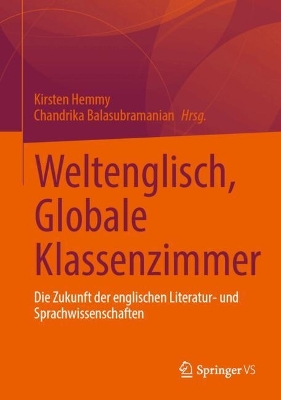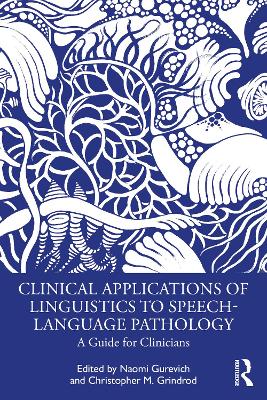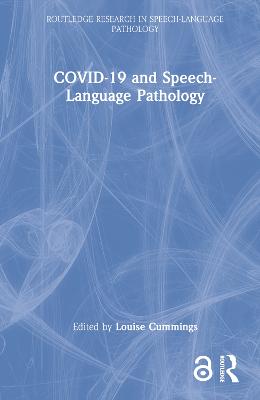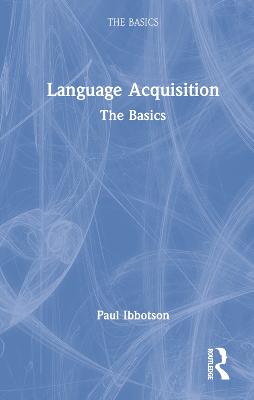Clinical Applications of Linguistics to Speech-Language Pathology
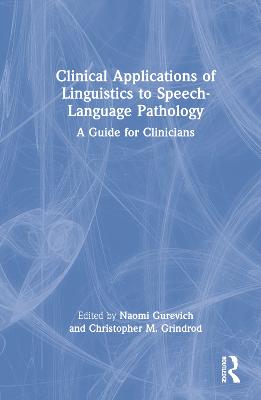 portes grátis
portes grátis
Clinical Applications of Linguistics to Speech-Language Pathology
A Guide for Clinicians
Grindrod, Christopher; Gurevich, Naomi
Taylor & Francis Ltd
11/2022
242
Dura
Inglês
9780367492915
15 a 20 dias
Descrição não disponível.
Part 1. Applications to Child Speech & Language Differences & Disorders
Chapter 1: Phonetics & Phonology
Beyond the phoneme
Shelley L. Velleman & Claudia I. Abbiati (University of Vermont)
Chapter 2: Morphosyntax
Using linguistic theory to frame assessment and intervention of morphosyntactic skills in
children
Stacy K. Betz (Purdue University Fort Wayne)
Chapter 3: Prosody
Acquisition of prosody and linguistically-based approaches to assessment and intervention
Jill Thorson (University of New Hampshire)
Chapter 4: Sociolinguistics
Use of linguistic theory to inform the assessment and treatment of developmental language disorder within African American English
Janna B. Oetting (Louisiana State University), Jessica R. Berry (South Carolina State University) & Kyomi D. Gregory-Martin (Pace University)
Chapter 5: Sign Language
Signed language structure and considerations for speech and language intervention with deaf children
James McCann (Gallaudet University), Lauren Kelley (Houston Independent School District) & David Quinto-Pozos (University of Texas at Austin)
Part 2. Applications to Adult Speech & Language Differences & Disorders
Chapter 6: Phonetics & Phonology
The phonetics and phonology of intelligibility: The functional importance to intelligibility
of speech sounds
Naomi Gurevich (Purdue University Fort Wayne) & Heejin Kim (University of Illinois at Urbana-Champaign)
Chapter 7: Morphosyntax
Verb and sentence impairments in aphasia: Theory, assessment, and treatment
Roelien Bastiaanse (Center for Language and Brain)
Chapter 8: Semantics
Contextual variability of word meaning: Implications for the treatment of acquired language disorders
Christopher M. Grindrod (Purdue University Fort Wayne)
Chapter 9: Pragmatics
Discourse Assessment and Treatment in Traumatic Brain Injury
Shaun Stephens (University of Vermont), Carl Coelho (University of Connecticut) & Michael S. Cannizzaro (University of Vermont)
Chapter 10: Prosody
Prosody: Linguistic and clinical perspectives
Jennifer Cole (Northwestern University), Allison Hilger (University of Colorado Boulder), & Shivani Patel (Lucile Packard Children's Hospital Stanford)
Chapter 11: Sociolinguistics
The linguistics of accentedness: How phonetics, phonology, and sociolinguistic considerations impact clinical intervention of accent modification
Naomi Gurevich & Talia Bugel (Purdue University Fort Wayne)
Chapter 1: Phonetics & Phonology
Beyond the phoneme
Shelley L. Velleman & Claudia I. Abbiati (University of Vermont)
Chapter 2: Morphosyntax
Using linguistic theory to frame assessment and intervention of morphosyntactic skills in
children
Stacy K. Betz (Purdue University Fort Wayne)
Chapter 3: Prosody
Acquisition of prosody and linguistically-based approaches to assessment and intervention
Jill Thorson (University of New Hampshire)
Chapter 4: Sociolinguistics
Use of linguistic theory to inform the assessment and treatment of developmental language disorder within African American English
Janna B. Oetting (Louisiana State University), Jessica R. Berry (South Carolina State University) & Kyomi D. Gregory-Martin (Pace University)
Chapter 5: Sign Language
Signed language structure and considerations for speech and language intervention with deaf children
James McCann (Gallaudet University), Lauren Kelley (Houston Independent School District) & David Quinto-Pozos (University of Texas at Austin)
Part 2. Applications to Adult Speech & Language Differences & Disorders
Chapter 6: Phonetics & Phonology
The phonetics and phonology of intelligibility: The functional importance to intelligibility
of speech sounds
Naomi Gurevich (Purdue University Fort Wayne) & Heejin Kim (University of Illinois at Urbana-Champaign)
Chapter 7: Morphosyntax
Verb and sentence impairments in aphasia: Theory, assessment, and treatment
Roelien Bastiaanse (Center for Language and Brain)
Chapter 8: Semantics
Contextual variability of word meaning: Implications for the treatment of acquired language disorders
Christopher M. Grindrod (Purdue University Fort Wayne)
Chapter 9: Pragmatics
Discourse Assessment and Treatment in Traumatic Brain Injury
Shaun Stephens (University of Vermont), Carl Coelho (University of Connecticut) & Michael S. Cannizzaro (University of Vermont)
Chapter 10: Prosody
Prosody: Linguistic and clinical perspectives
Jennifer Cole (Northwestern University), Allison Hilger (University of Colorado Boulder), & Shivani Patel (Lucile Packard Children's Hospital Stanford)
Chapter 11: Sociolinguistics
The linguistics of accentedness: How phonetics, phonology, and sociolinguistic considerations impact clinical intervention of accent modification
Naomi Gurevich & Talia Bugel (Purdue University Fort Wayne)
Este título pertence ao(s) assunto(s) indicados(s). Para ver outros títulos clique no assunto desejado.
Speech - Language Pathologists;Prosodic Impairment;LSVT;ABI;TD Peer;TD Child;Pitch Accents;Intonational Phrase;HH Child;Lexical Stress;Clinical Practice;DLD;SLI;Lexical Stress Patterns;Atypical Prosody;Prosodic Phrase;Speech Sound Disorders;TD Group;Aphasic Speaker;Phrasal Stress;Iambic Stress Pattern;Prosodic Abilities;Grammaticality Judgment Tasks;La Trobe Communication Questionnaire;Accent Modification
Part 1. Applications to Child Speech & Language Differences & Disorders
Chapter 1: Phonetics & Phonology
Beyond the phoneme
Shelley L. Velleman & Claudia I. Abbiati (University of Vermont)
Chapter 2: Morphosyntax
Using linguistic theory to frame assessment and intervention of morphosyntactic skills in
children
Stacy K. Betz (Purdue University Fort Wayne)
Chapter 3: Prosody
Acquisition of prosody and linguistically-based approaches to assessment and intervention
Jill Thorson (University of New Hampshire)
Chapter 4: Sociolinguistics
Use of linguistic theory to inform the assessment and treatment of developmental language disorder within African American English
Janna B. Oetting (Louisiana State University), Jessica R. Berry (South Carolina State University) & Kyomi D. Gregory-Martin (Pace University)
Chapter 5: Sign Language
Signed language structure and considerations for speech and language intervention with deaf children
James McCann (Gallaudet University), Lauren Kelley (Houston Independent School District) & David Quinto-Pozos (University of Texas at Austin)
Part 2. Applications to Adult Speech & Language Differences & Disorders
Chapter 6: Phonetics & Phonology
The phonetics and phonology of intelligibility: The functional importance to intelligibility
of speech sounds
Naomi Gurevich (Purdue University Fort Wayne) & Heejin Kim (University of Illinois at Urbana-Champaign)
Chapter 7: Morphosyntax
Verb and sentence impairments in aphasia: Theory, assessment, and treatment
Roelien Bastiaanse (Center for Language and Brain)
Chapter 8: Semantics
Contextual variability of word meaning: Implications for the treatment of acquired language disorders
Christopher M. Grindrod (Purdue University Fort Wayne)
Chapter 9: Pragmatics
Discourse Assessment and Treatment in Traumatic Brain Injury
Shaun Stephens (University of Vermont), Carl Coelho (University of Connecticut) & Michael S. Cannizzaro (University of Vermont)
Chapter 10: Prosody
Prosody: Linguistic and clinical perspectives
Jennifer Cole (Northwestern University), Allison Hilger (University of Colorado Boulder), & Shivani Patel (Lucile Packard Children's Hospital Stanford)
Chapter 11: Sociolinguistics
The linguistics of accentedness: How phonetics, phonology, and sociolinguistic considerations impact clinical intervention of accent modification
Naomi Gurevich & Talia Bugel (Purdue University Fort Wayne)
Chapter 1: Phonetics & Phonology
Beyond the phoneme
Shelley L. Velleman & Claudia I. Abbiati (University of Vermont)
Chapter 2: Morphosyntax
Using linguistic theory to frame assessment and intervention of morphosyntactic skills in
children
Stacy K. Betz (Purdue University Fort Wayne)
Chapter 3: Prosody
Acquisition of prosody and linguistically-based approaches to assessment and intervention
Jill Thorson (University of New Hampshire)
Chapter 4: Sociolinguistics
Use of linguistic theory to inform the assessment and treatment of developmental language disorder within African American English
Janna B. Oetting (Louisiana State University), Jessica R. Berry (South Carolina State University) & Kyomi D. Gregory-Martin (Pace University)
Chapter 5: Sign Language
Signed language structure and considerations for speech and language intervention with deaf children
James McCann (Gallaudet University), Lauren Kelley (Houston Independent School District) & David Quinto-Pozos (University of Texas at Austin)
Part 2. Applications to Adult Speech & Language Differences & Disorders
Chapter 6: Phonetics & Phonology
The phonetics and phonology of intelligibility: The functional importance to intelligibility
of speech sounds
Naomi Gurevich (Purdue University Fort Wayne) & Heejin Kim (University of Illinois at Urbana-Champaign)
Chapter 7: Morphosyntax
Verb and sentence impairments in aphasia: Theory, assessment, and treatment
Roelien Bastiaanse (Center for Language and Brain)
Chapter 8: Semantics
Contextual variability of word meaning: Implications for the treatment of acquired language disorders
Christopher M. Grindrod (Purdue University Fort Wayne)
Chapter 9: Pragmatics
Discourse Assessment and Treatment in Traumatic Brain Injury
Shaun Stephens (University of Vermont), Carl Coelho (University of Connecticut) & Michael S. Cannizzaro (University of Vermont)
Chapter 10: Prosody
Prosody: Linguistic and clinical perspectives
Jennifer Cole (Northwestern University), Allison Hilger (University of Colorado Boulder), & Shivani Patel (Lucile Packard Children's Hospital Stanford)
Chapter 11: Sociolinguistics
The linguistics of accentedness: How phonetics, phonology, and sociolinguistic considerations impact clinical intervention of accent modification
Naomi Gurevich & Talia Bugel (Purdue University Fort Wayne)
Este título pertence ao(s) assunto(s) indicados(s). Para ver outros títulos clique no assunto desejado.
Speech - Language Pathologists;Prosodic Impairment;LSVT;ABI;TD Peer;TD Child;Pitch Accents;Intonational Phrase;HH Child;Lexical Stress;Clinical Practice;DLD;SLI;Lexical Stress Patterns;Atypical Prosody;Prosodic Phrase;Speech Sound Disorders;TD Group;Aphasic Speaker;Phrasal Stress;Iambic Stress Pattern;Prosodic Abilities;Grammaticality Judgment Tasks;La Trobe Communication Questionnaire;Accent Modification


